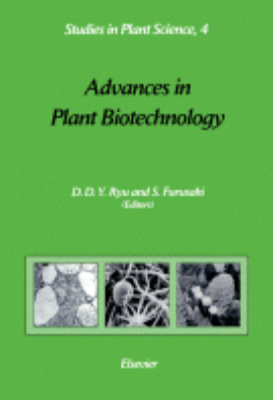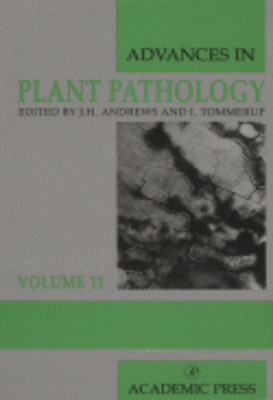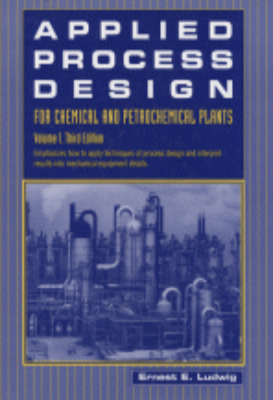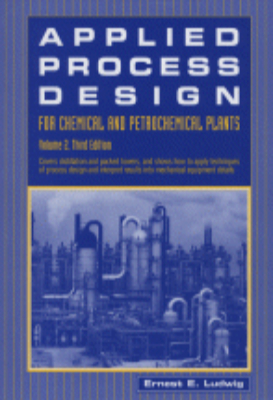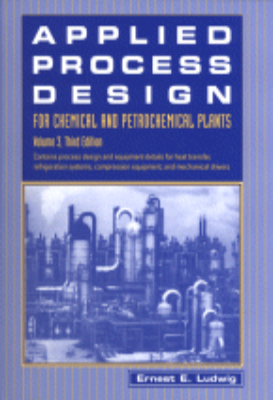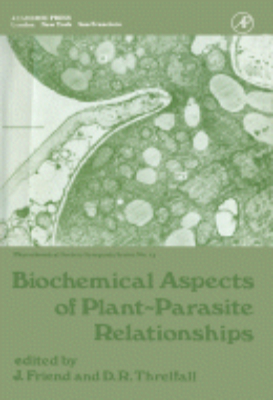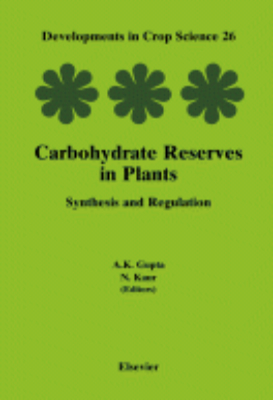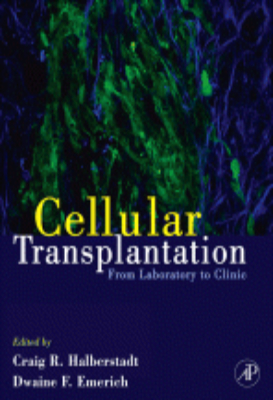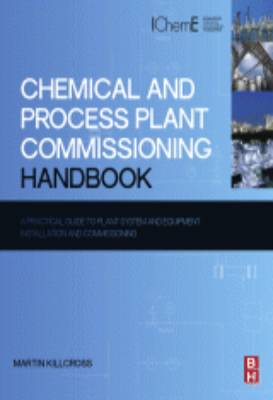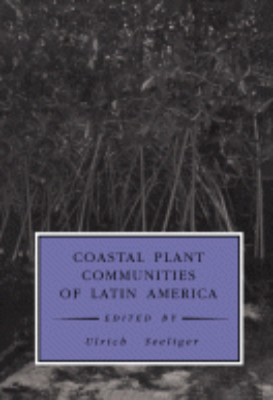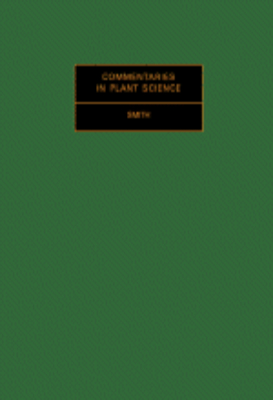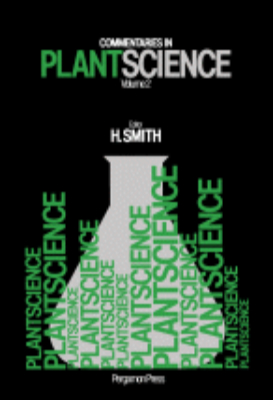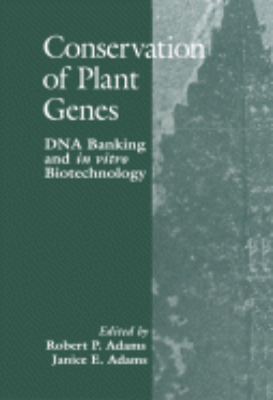E-Resources
A Textbook of Plant Virus Diseases
A Textbook of Plant Virus Diseases deals with a discussion of different plant viruses, their properties, and the corresponding diseases these viruses cause. It includes a list of host plants of every virus arranged alphabetically. The book discusses the new types of disease vectors, such as root-infesting fungi, nematode worms, mites, and insects that are both biting and sucking. It also discusses the development of new techniques in electron microscopy that is used to characterize in detail the causal viruses of a number of plant virus diseases. Furthermore, it presents the development of plant virus serology, as well as the improved methods of virus isolation that allow the classification of viruses into related groups. The book includes a Bibliography and an Index of Synonyms that can be used in identifying given virus name. In addition, cross-references are included for searching a particular virus under the alternative names. This book will be invaluable to ecologists, environmentalists, agriculturalists, and other scientists interested in plant viruses. Biology students will also find this reference helpful.
Additional Woody Crop Plants
Water Deficits and Plant Growth, Volume VII: Additional Woody Crop Plants is an extension of Volume VI of this treatise and deals primarily with water relations of woody crop plants in a community context. Organized into five chapters, this book begins with the important problem of predicting effects of vegetation changes on transpiration and evaporation. Separate chapters follow that discuss water relations of cotton, small fruits, grapevines, and peach trees and orchards. For each of these plant communities, emphasis is placed on hydrological cycles; water use and transpiration; absorption of water; and effects of environmental factors on soil and plant water balance. The effects of water deficits on physiological processes; vegetative and reproductive growth; yield of harvested products; drought resistance; and cultural practices affecting plant water balance and yield are also emphasized in this book. This volume will be useful to both researchers and those involved in the practice of growing woody plants for crops or for esthetic values.
Advances in Plant Biotechnology
This volume, contributed to by a group of 46 research scientists and engineers, focuses on the integration of two aspects of plant biotechnology - the basic plant science and applied bioprocess engineering. Included in this book are 17 chapters, each dealing with specific topics of current interest with three coherent themes of: plant gene expression, regulation and manipulation; plant cell physiology and metabolism and their regulation; and bioprocess engineering and bioreactor performance of plant cell cultures. All of these topics are integrated into a main theme of "enabling plant biotechnology" relevant to the production of secondary metabolites. This book will be of great value to all plant cell biologists and molecular geneticists, and all those interested in the integration of plant science and bioprocess engineering for development of enabling technology relevant to the production of plant secondary metabolites.
Analysis of Growth: Behavior of Plants and their Organs
Plant Physiology, Volume VA: Analysis of Growth: Behavior of Plants and their Organs describes the main events of growth as seen through the behavior of plants and their organs at an organismal level. This book discusses the quantitative interpretation of growth; the effects of environmental factors; the treatment of tropism; and the effects of many exogenous growth-regulating compounds. Organized into five chapters, the book initially describes mathematically the plant growth mechanisms as they relate to the factors that determine morphogenesis. The text also discusses methods for assessing the effects of external conditions and of age on certain important physiological aspects of plant growth. The subsequent chapter deals with phyllotaxis as a selected aspect of the interpretation of growth and form. The third chapter describes various phototropically and geotropically sensitive systems impinge upon on plant growth. This chapter also covers some reversible nastic movements of organs and the tactic movements of free swimming cells. The next chapter deals with relations between the chemical structure of synthetic compounds and their biological action. The last chapter focuses on the modulation of growth and development by features of the environment and also upon experimental manipulation and under controlled conditions of growth. This volume is an invaluable resource for plant biologists, physiologists, and researchers.
Applied Plant Genomics and Biotechnology
"Applied plant genomics and biotechnology reviews the recent advancements in the post-genomic era, discussing how different varieties respond to abiotic and biotic stresses, investigating epigenetic modifications and epigenetic memory through analysis of DNA methylation states, applicative uses of RNA silencing and RNA interference in plant physiology and in experimental transgenics, and plants modified to produce high-value pharmaceutical proteins. The book provides an overview of research advances in application of RNA silencing and RNA interference, through Virus-based transient gene expression systems, Virus induced gene complementation (VIGC), Virus induced gene silencing (Sir VIGS, Mr VIGS) Virus-based microRNA silencing (VbMS) and Virus-based RNA mobility assays (VRMA); RNA based vaccines and expression of virus proteins or RNA, and virus-like particles in plants, the potential of virus vaccines and therapeutics, and exploring plants as factories for useful products and pharmaceuticals are topics wholly deepened. The book reviews and discuss Plant Functional Genomic studies discussing the technologies supporting the genetic improvement of plants and the production of plant varieties more resistant to biotic and abiotic stresses. Several important crops are analysed providing a glimpse on the most up-to-date methods and topics of investigation. The book presents a review on current state of GMO, the cisgenesis-derived plants and novel plant products devoid of transgene elements, discuss their regulation and the production of desired traits such as resistance to viruses and disease also in fruit trees and wood trees with long vegetative periods. Several chapters cover aspects of plant physiology related to plant improvement: cytokinin metabolism and hormone signaling pathways are discussed in barley; PARP-domain proteins involved in Stress-Induced Morphogenetic Response, regulation of NAD signaling and ROS dependent synthesis of anthocyanins. Apple allergen isoforms and the various content in different varieties are discussed and approaches to reduce their presence. Euphorbiaceae, castor bean, cassava and Jathropa are discussed at genomic structure, their diseases and viruses, and methods of transformation. Rice genomics and agricultural traits are discussed, and biotechnology for engineering and improve rice varieties. Mango topics are presented with an overview of molecular methods for variety differentiation, and aspects of fruit improvement by traditional and biotechnology methods. Oilseed rape is presented, discussing the genetic diversity, quality traits, genetic maps, genomic selection and comparative genomics for improvement of varieties. Tomato studies are presented, with an overview on the knowledge of the regulatory networks involved in flowering, methods applied to study the tomato genome-wide DNA methylation, its regulation by small RNAs, microRNA-dependent control of transcription factors expression, the development and ripening processes in tomato, genomic studies and fruit modelling to establish fleshy fruit traits of interest; the gene reprogramming during fruit ripening, and the ethylene dependent and independent DNA methylation changes. Key Features. provides an overview on the ongoing projects and activities in the field of applied biotechnology. includes examples of different crops and applications to be exploited. reviews and discusses Plant Functional Genomic studies and the future developments in the field. explores the new technologies supporting the genetic improvement of plants"
Biochemical Aspects of Plant – Parasite Relationships
Biochemical Aspects of Plant-Parasite Relationships is a collection of papers from the Phytochemical Society Symposium of the same subject held at Hull in April 1975. This collection discusses biochemical research on the mechanisms involved in the invasion of plants by pathogens, the production of disease symptoms, and the mechanisms occurring in plant resistance against the invading microorganisms. Some papers discuss the genetics of fungal-plant interactions and the structural features of both infection and resistance processes, Such genetic interactions and structural features point to a biochemical reason for the plant-parasite interaction. Several attempts to correlate production of a cell wall degrading enzyme in vitro by a pathogen's virulence have shown great differences between in vitro and in vivo environments. One paper cites as an example the pathogens which produce both pectic hydrolases and lyases: the type of enzyme that is found to predominate often is actually associated with the pH of the environment. One paper also investigates nucleic acid transfer and the possible role of RNA in the host-parasite specificity. This collection can prove beneficial for microbiologists, biochemists, biotechnologists, plant biologists, and academicians connected with the biological sciences.
Biogenesis of Plant Cell Wall Polysaccharides
Biogenesis of Plant Cell Wall Polysaccharides contains the proceedings of a 1972 symposium on Biogenesis of Plant Cell Wall Polysaccharides held at the 164th National Meeting of the American Chemical Society, New York, New York. The symposium focuses on a broad range of interest from structural to functional aspects of cell wall polysaccharide biosynthesis in algae as well as in higher plants. Organized into 17 chapters, this book details the progress and understanding regarding the biosynthesis of cell wall components and the assembly of these components in the wall. It encompasses topics on cell wall polysaccharides, UDP-D-glucuronic acid pyrophosphorylase, and D-xylose. This reference also tackles the UDP-D-glucuronic acid, L-arabinose, D-apiose, and carbohydrate polymers. Furthermore, it explains other topics, such as on extensin, hydroxyproline-rich glycoprotein, cellulose, and polygalacturonic acid.
Biological Approaches and Evolutionary Trends in Plants
Biological Approaches and Evolutionary Trends in Plants is a collection of papers presented at the Fourth International Symposium of Plant Biosystematics held on July 10-14, 1989 in Kyoto, Japan. Contributors, some are world's leading plant biologists, discuss the findings in evolutionary biology and issues in plant biosystematics in light of the evidence and ideas brought forward at various levels of biological organization, from molecule to cell, individual, population, species, and community levels. This volume is organized into four sections encompassing 22 chapters and begins with an overview of discoveries concerning parapatric differentiation of weed populations, including adaptive evolution in herbicide resistant biotypes and complex evolutionary patterns in weed-crop complexes of various groups. The next section explores molecular approaches in plant biosystematics, focusing on amino acid sequencing of proteins; restriction-site variations of cpDNA, mitDNA, rDNA, etc.; and chromosome-banding patterns revealed by differential staining. The discussion shifts to a wave of research in plant population biology and evolutionary ecology since the 1970s and its impact on biology and biosystematics. The book considers various aspects of reproductive biology and evolutionary changes in significant reproductive parameters and attempts to demographically quantify these parameters. The final chapter is devoted to the use of functional phylogenetic systematics for predictive ecology. This book will be of interest to plant biologists and scientists and researchers in fields such as biochemistry, botany, microbiology, ecology, and evolutionary biology.
Biology of Plant Litter Decomposition: Volume 1 1974
Biology of Plant Litter Decomposition, Volume 1 focuses on decomposition of various types of litter, which include all plant remains, ranging from still standing dead trees to the decomposing hyphae of fungi and bacterial cells, including herbivore dung. The book is organized into seven chapters, each devoted to a specific type of litter including lower plants, herbaceous, angiosperm, and coniferous tree leaf litters; wood; root; and digested litter. It describes the structure and function of the organisms concerned. It also covers the involvement of biotrophic and necrotrophic parasites of higher plants in the early stages of decomposition. With a strong focus on the interrelationships in plant litter decomposition, the book is an ideal source of information for research biologists who are interested in life cycle and decomposition of plants.
Biology of Plant Litter Decomposition: Volume 2 1974
Biology of Plant Litter Decomposition, Volume II is organized into two parts. The first part focuses on the organisms involved in plant litter decomposition, particularly, their structure and function. The second part deals with the environmental conditions under which breakdown occurs over the whole global surface. This volume separately considers terrestrial, freshwater, and marine environments. Furthermore, it describes two anthropocentric aspects: agriculture, with an emphasis on the importance of the saprophytic activity of plant pathogenic fungi, and the increasingly important composting of urban waste. This book will be invaluable to science students and instructors, as well as to biologists, botanists, marine ecologists.
Biotechnology and Plant Breeding
"Biotechnology and Plant Breeding includes critical discussions of the newest and most important applications of biotechnology in plant breeding, covering key topics such as biometry applied to molecular analysis of genetic diversity, genetically modified plants, and more. This work goes beyond recombinant DNA technology to bring together key information and references on new biotech tools for cultivar development, such as double-haploids, molecular markers, and genome-wide selection, among others. It is increasingly challenging for plant breeders and agricultural systems to supply enough food, feed, fiber and biofuel for the global population. As plant breeding evolves and becomes increasingly sophisticated, a staggering volume of genetic data is now generated. Biotechnology and Plant Breeding helps researchers and students become familiar with how the vast amounts of genetic data are generated, stored, analyzed and applied. This practical resource integrates information about plant breeding into the context of modern science, and assists with training for plant breeders including those scientists who have a good understanding of molecular biology/biotechnology and need to learn the art and practice of plant breeding. Plant biologists, breeding technicians, agronomists, seed technologists, students, and any researcher interested in biotechnologies applied to plant breeding will find this work an essential tool and reference for the field. Key Features. Presents in-depth but easy-to-understand coverage of topics, so plant breeders can readily comprehend them and apply them to their breeding programs. Includes chapters that address the already developed and optimized biotechnologies for cultivar development, with real-world application for users. Features contributions by authors with several years of experience in their areas of expertise"
Biotechnology in Plant Science
Biotechnology in Plant Science: Relevance to Agriculture in the Eighties reflects the exchange of ideas among the participants in a symposium held at Cornell University in 1985. This reference highlights advances in and applications of biotechnology. Applications include plant breeding and agricultural business. This book is comprised of research articles emphasizing available technologies including tissue culture and plant transformation. Papers included in this reference also cover topics on genes for transformation and plant molecular biology and agrichemicals. As this reference focuses more on tissue culture, it specifically explains plant regeneration and genetic events. The book discusses the roles of various institutions and sectors in advancing biotechnology and related fields. It also provides two panel discussions on the implications of the technological advances in conjunction with the issues about these innovations. Researchers, lecturers, and students in biotechnology and agriculture will find this anthology an excellent reference for further studies and research in biotechnology and its applications to agriculture.
C4 Plant Biology
Due to many issues related to long-term carbon dynamics, an improved understanding of the biology of C4 photosynthesis is required by more than the traditional audience of crop scientists, plant physiologists, and plant ecologists. This work synthesizes the latest developments in C4 biochemistry, physiology, systematics, and ecology. The book concludes with chapters discussing the role of C4 plants in the future development of the biosphere, particularly their interactive effects on soil, hydrological, and atmospheric processes.
Cannon’s Point Plantation 1794 – 1860
Cannon's Point Plantation, 1794 1860: Living Conditions and Status Patterns in the Old South presents the results of historical archaeological investigations at Cannon's Point, an antebellum sea-island cotton plantation off the Georgia coast. This book compares investigations of archaeological remains at sites once occupied by slaves, overseers, and planterspeople who differed in racial, social, and economic status. This text not only examines the material living conditions of the Old South, but also observes a substantial example of status patterning in the archaeological record. This publication is valuable to archaeologists and historians concerned with the treatment and daily lives of slaves in the Old South.
Cellular Transplantation
"There have been tremendous strides in cellular transplantation in recent years, leading to accepted practice for the treatment of certain diseases, and use for many others in trial phases. The long history of cellular transplantation, or the transfer of cells from one organism or region of the body to another, has been revolutionized by advances in stem cell research, as well as developments in gene therapy. Cellular Transplants: From Lab to Clinic provides a thorough foundation of the basic science underpinning this exciting field, expert overviews of the state-of-the-art, and detailed description of clinical success stories to date, as well as insights into the road ahead. As highlighted by this timely and authoritative survey, scale-up technologies and whole organ transplantation are among the hurdles representing the next frontier. The contents are organized into four main sections, with the first covering basic biology, including transplant immunology, the use of immunosuppressive drugs, stem cell biology, and the development of donor animals for transplantation. The next part looks at peripheral and reconstructive applications, followed by a section devoted to transplantation for diseases of the central nervous system. The last part presents efforts to address the key challenges ahead, such as identifying novel transplantable cells and integrating biomaterials and nanotechnology with cell matrices. Key Features. Provides detailed description of clinical trials in cell transplantation. Review of current therapeutic approaches. Coverage of the broad range of diseases addressed by cell therapeutics. Discussion of stem cell biology and its role in transplantation"
Chemical and Process Plant Commissioning Handbook
"The Chemical and Process Plant Commissioning Handbook, winner of the 2012 Basil Brennan Medal from the Institution of Chemical Engineers, is a guide to converting a newly constructed plant or equipment into a fully integrated and operational process unit. Good commissioning is based on a disciplined, systematic and proven methodology and approach that achieve results in the safest, most efficient, cost effective and timely manner. The book is supported by detailed, proven and effective commission templates, plus extensive commissioning scenarios that enable the reader to learn the context of good commissioning practice from an experienced commissioning manager. It focuses on the critical safety assessment and inspection regimes necessary to ensure that new plants are compliant with OSHA and environmental requirements. Martin Killcross has brought together the theory of textbooks and technical information obtained from sales literature, in order to provide engineers with what they need to know before initiating talks with vendors regarding equipment selection. Key Features. Unique information from a respected, global commissioning manager: delivers the know-how to succeed for anyone commissioning new plant or equipment. Comes with online commissioning process templates that make this title a working tool kit as well as a key reference. Extensive examples of successful commissioning processes with step-by-step guidance enable readers to understand the function and performance of the wide range of tasks required in the commissioning process"
Chemical Plant Taxonomy
Chemical Plant Taxonomy focuses on the classification of plants based on their chemical composition. Composed of contributions of authors, the text first considers the methods of plant taxonomy. Folk taxonomy; Linnaean and post-Linnaean taxonomy; Darwin and ""Evolutionary Taxonomy""; and the development of taxonomic practice are considered. The book continues with discussions on the theoretical and practical aspects of the ""species"" concepts and an outline of the history of chemical taxonomy. The selection also looks at the qualities of chemotaxonomy, the usefulness of chemistry in plant taxonomy, biosynthetic pathways, and the factors affecting the production of secondary plant products. The text discusses the distribution of alkanes. The isolation and characterization of alkanes; taxonomic applications of alkanes; biogenesis of alkanes; and fossil alkanes are discussed. The selection highlights the chemical taxonomy of acetylenic compounds, the distribution of fatty acids in plant lipids, distribution of aliphatic polyols, cyclitols, plant glycosides, and alkaloids. The text is a good source of information for readers wanting to study the taxonomy of chemical plants.
Chemistry of Plant Phosphorus Compounds
"Provides a high level reference source for scientists engaged in any aspect of plant research chemistry, biochemistry or physiology with primary focus on the chemistry of phosphorus-containing compounds that occur naturally in the plant kingdom, and specifically in the higher plants (Plantae). The book is comprehensive with respect to nomenclature, physical properties, and distribution worldwide. There are many tables of actual data on phosphorus compounds occurring in whole plants and parts of plants. The tables provide detailed data that is needed by the food industry, agriculture, etc as many of the phosphorus compounds are common to both plants and animals. Two appendices cover other aspects including changes in phosphorus-containing compounds during germination and their accumulation during growth and senescence. The final sections of the book comprise separate indexes of plants, compounds and authors. Key Features. Comprehensive examination of phosphorus compounds found in plants. Extensive tables listing types of compounds and their occurrence in plants including: Nomenclature; Occurrence; Physical Properties; Synthesis; Hydrolysis; Phosphorylation; Extraction; Separation and Analysis. Easy to use indexes of plants, compounds and authors"
Coastal Plant Communities of Latin America
"Published ecological information on Latin American coasts is scarce, despite the growing need for a comprehensive examination of coastal processes on a global scale. This book brings together details on benthic marine algae, seagrasses, salt marsh, mangrove, and dune plant communities throughout Latin America. Researchers and graduate students in plant ecology, marine biology, and environmental management will benefit from the valuable information in this book. Key Features. Distribution and community ecology. Modern research approaches. Coastal management possibilities"
Commentaries in Plant Science: 1976
Commentaries in Plant Science is a compilation of reviews of recent developments in pure and applied plant science. It covers a wide range of topics such as carboxylation, photorespiration, carbon assimilation, mating reaction, protein evolution, recombination, and photoperiodic induction. The book is comprised of 21 commentaries and begins with some of the physiological processes in C4 plants. The succeeding chapters deal with stomatal control of entry of air pollutants, mating reactions in yeasts, uptake and expression of DNA by plants, mechanics and metabolisms of guard cells, breeding for modified fatty acid composition, gravity sensing mechanism and response mechanism of root caps. It also outlines the functions of lectins, plant virus inhibitors, and cytokinins. Research workers, teachers and students who wish to broaden their knowledge about plant science will find this book very useful.
Commentaries in Plant Science: Volume 2
Commentaries in Plant Science, Volume 2 is a collection of papers that reviews developments in the pure and applied science of plants. One paper discusses the role of supercooling in the winter survival mechanism of and ecological distribution of many plant communities. Another paper evaluates the Cholodny-Went theory of shoot geotropism that there is strong evidence in auxin redistribution occurring in a rapid manner to cause geotropic curvature. The magnitude of auxin redistribution is too rare to cause differential growth. Some insect pests have specific nutritional requirements and well-developed mechanisms for selecting their plant host. One paper enumerates the benefits of using insect-resistant host plant varieties, such as the non-incurrence of extra costs, these are environmentally safe, and are compatible with most other methods of pest control. Another paper discusses the nature and possible genetic manipulation of a complex bacteria, the actinomycetes, as well as its role as antibiotic producer. Another paper examines the nature of seed storage proteins and of the cellular processes that are related in their synthesis and deposition especially in cereals and legume. This collection is suitable for botanists, genecologists, taxonomists, biologists, and investigators whose works involve cell membrane research.



